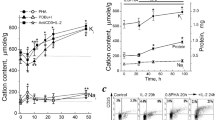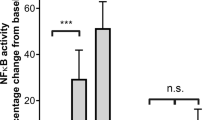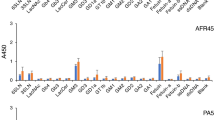Abstract
IT has been suggested that the lymphocyte-stimulating effects of phytohæmagglutinin (PHA) may be mediated by a cell surface reaction, thus accounting for the agglutination of PHA-treated lymphocytes1. Surface binding of PHA would, in all likelihood, change the cell surface charge density as estimated by cell electrophoresis. The experiments described here were designed to investigate this possibility and, accordingly, lymphoid cells were collected from a variety of sources and their electrophoretic mobilities determined before and after exposure to PHA.
This is a preview of subscription content, access via your institution
Access options
Subscribe to this journal
Receive 51 print issues and online access
$199.00 per year
only $3.90 per issue
Buy this article
- Purchase on Springer Link
- Instant access to full article PDF
Prices may be subject to local taxes which are calculated during checkout
Similar content being viewed by others
References
Hirschhorn, K., Bach, F., Kolodny, R. L., Firschein, I. L., and Hashem, N., Science, 142, 1185 (1963).
Vassar, P. S., Taylor, H. E., and Culling, C. F. A., Nature, 200, 691 (1963).
Vassar, P. S., Lab. Invest., 12, 1072 (1963).
Hirschhorn, K., Kolodny, R. L., Hashem, N., and Bach, F., Lancet, ii, 305 (1963).
Cook, G. M. W., Seaman, G. V. F., and Weiss, L., Cancer Res., 23, 1813 (1963).
Author information
Authors and Affiliations
Rights and permissions
About this article
Cite this article
VASSAR, P., CULLING, C. Cell Surface Effects of Phytohæmagglutinin. Nature 202, 610–611 (1964). https://doi.org/10.1038/202610a0
Issue Date:
DOI: https://doi.org/10.1038/202610a0
This article is cited by
-
Changes in Distribution of Electric Charges in the Surface Membrane of Rat Ascites Hepatocarcinoma Cells induced by Con A
Nature (1973)
-
Effect of ALS Globulins on Amino-acid Incorporation by Human Peripheral Lymphocytes
Nature (1970)
-
Phytohaemagglutinin: an Early Effect on Lymphocyte Lipid Metabolism
Nature (1968)
Comments
By submitting a comment you agree to abide by our Terms and Community Guidelines. If you find something abusive or that does not comply with our terms or guidelines please flag it as inappropriate.



